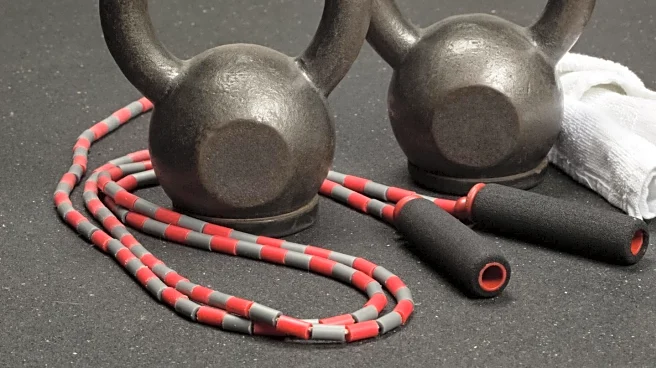What's Happening?
Dr. Tania Elliott, a prominent U.S. doctor, has highlighted the benefits of interval walk training, suggesting it is more effective than the commonly recommended 10,000 steps a day. According to Dr. Elliott, a 30-minute interval walk can significantly improve health outcomes, including aerobic capacity, CO2 max, leg muscle strength, and blood pressure. This approach, supported by research from Japan, involves walking at varying speeds and intensities, which can lead to better cardiovascular health and overall fitness. Dr. Elliott shared these insights in a video on Instagram, emphasizing the importance of incorporating interval walk training into regular exercise routines.
Why It's Important?
The recommendation to focus on interval walk training rather than the traditional 10,000 steps could shift public health guidelines and personal fitness goals. This method offers a more efficient way to achieve health benefits, potentially reducing the risk of heart disease and improving physical fitness. As people seek effective ways to maintain health, this approach could influence fitness industry trends, encouraging gyms and trainers to incorporate interval walking into their programs. Additionally, it may impact wearable fitness technology, prompting updates to track interval walking metrics.
What's Next?
As interval walk training gains attention, fitness professionals and health organizations may begin to advocate for its inclusion in exercise regimens. This could lead to new fitness programs and classes focused on interval walking. Furthermore, research institutions might conduct more studies to explore its long-term benefits and potential applications in preventive health strategies. Public health campaigns could also emerge, promoting interval walking as a practical and accessible exercise option for diverse populations.
Beyond the Headlines
The shift towards interval walk training highlights a broader trend in personalized fitness and health optimization. It underscores the importance of adapting exercise routines to individual needs and capabilities, rather than adhering to one-size-fits-all guidelines. This approach may also encourage people to be more mindful of their physical activity, fostering a deeper understanding of how different types of exercise impact health.










